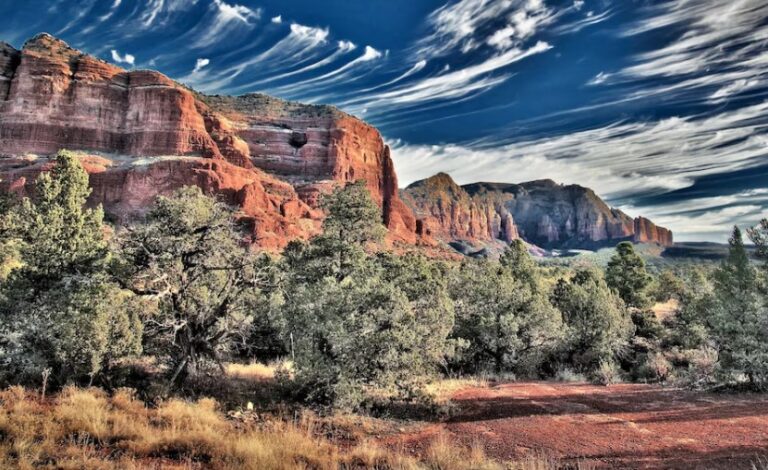The Grand Canyon, one of the Seven Natural Wonders of the World, captivates visitors with its breathtaking vistas, awe-inspiring geology, and rich cultural history. Planning your trip to this iconic national park requires careful consideration of the best time to visit. Here’s a comprehensive guide to help you make the most of your Grand Canyon experience in 2024:
Early Spring (March-April)
Mild Temperatures and Fewer Crowds
Spring is an ideal time to visit the Grand Canyon as temperatures begin to warm, hovering around 60°F (15°C), making it pleasant for outdoor activities. The crowds are typically smaller during this season, allowing you to enjoy the serenity of the canyon without the summer rush.
Wildflowers in Bloom
Spring is also the time for wildflowers to burst into bloom, painting the canyon’s slopes with vibrant colors. Hikers can witness an array of wildflowers, including Indian paintbrush, lupine, and desert marigolds, adding a touch of beauty to their adventures.
Late Spring (May)
Optimal Hiking Conditions
May offers the best hiking conditions in the Grand Canyon. The temperatures are comfortable, reaching highs in the low 70s°F (22°C), and the trails are typically free of snow. However, this time is also when crowds start to increase, so plan accordingly.
Explore the North Rim
For a more remote experience, consider visiting the North Rim, which is typically cooler and less crowded than the South Rim. The North Rim opens for the season in mid-May, offering stunning views of the canyon’s vast expanse.
Early Summer (June-July)
Summer Activities Abound
Summer is the peak season for tourism in the Grand Canyon, with warm temperatures and a wide range of activities available. Visitors can enjoy ranger-led hikes, mule rides into the canyon, and whitewater rafting along the Colorado River.
Cultural Experiences
The summer months offer an opportunity to delve into the rich Native American cultures associated with the Grand Canyon. Attend traditional dances, listen to storytelling, and learn about the history and traditions of the region.
Late Summer (August-September)
Monsoon Season
August and September bring the monsoon season to the Grand Canyon, characterized by dramatic thunderstorms and occasional flash floods. While the weather can be unpredictable, it also presents a unique opportunity to witness the canyon’s forces of nature.
Photography Opportunities
The monsoon season offers stunning photography opportunities as the storms create dramatic skies and illuminate the canyon’s features in a new light. Be prepared for the rain and take precautions to protect your camera equipment.
Early Fall (October-November)
Fall Foliage and Fewer Crowds
As fall colors begin to paint the trees, the Grand Canyon transforms into a picturesque landscape. The crowds also start to dwindle, making it a tranquil time to explore the park. Enjoy hiking, wildlife viewing, and scenic drives.
Cultural Heritage Month
October is Native American Heritage Month, and the Grand Canyon offers a chance to celebrate and learn about the indigenous cultures of the region. Attend special events, cultural demonstrations, and workshops to gain a deeper understanding of the area’s history.
Late Fall (November-December)
Winter Preparations and Wildlife Sighting
November and December mark the transition into winter as temperatures drop, and the park prepares for the cold season. However, it’s still a rewarding time to visit as the crowds are minimal, allowing for a secluded experience. The cooler temperatures make it ideal for wildlife viewing, and you may spot bighorn sheep, elk, and coyotes.
South Rim Closure
Please note that the South Rim of the Grand Canyon National Park is closed to all traffic, including bicycles and pedestrians, from December 12, 2023, to February 15, 2024, for maintenance. The North Rim remains open during this period.
Getting There
By Plane
The closest airports to the Grand Canyon are Flagstaff Pulliam Airport (FLG) and Phoenix Sky Harbor International Airport (PHX). From there, you can rent a car or take a shuttle to the park.
By Train
Amtrak’s Southwest Chief train provides service to Flagstaff, and from there, you can connect to a shuttle to the Grand Canyon.
By Car
Driving your own vehicle offers flexibility and independence. The park is accessible via several major highways, including I-40 and I-17.
Accommodation
The Grand Canyon offers a range of accommodation options within and near the park. Consider the following:
Inside the Park
Grand Canyon National Park Lodges offer scenic accommodations within the canyon, including the El Tovar Hotel, Bright Angel Lodge, and Phantom Ranch.
Outside the Park
Tusayan, Arizona, located just outside the park entrance, offers a variety of hotels and motels for a convenient stay. Flagstaff, about an hour and a half drive from the park, provides more lodging options and amenities.
Closing Remarks
The Grand Canyon is a timeless destination that offers a unique and unforgettable experience in every season. Whether you prefer spring wildflowers, summer adventure, or fall foliage, planning your trip according to the best time to visit will enhance your enjoyment of this natural wonder. Remember to check the National Park Service website for up-to-date information on closures, road conditions, and visitor services.
